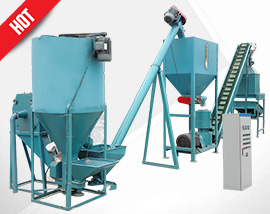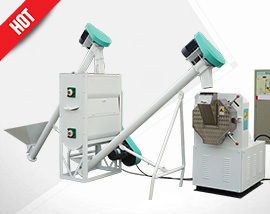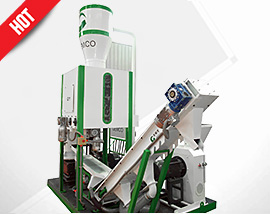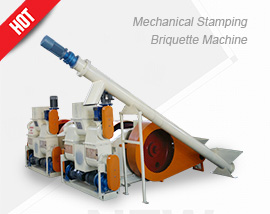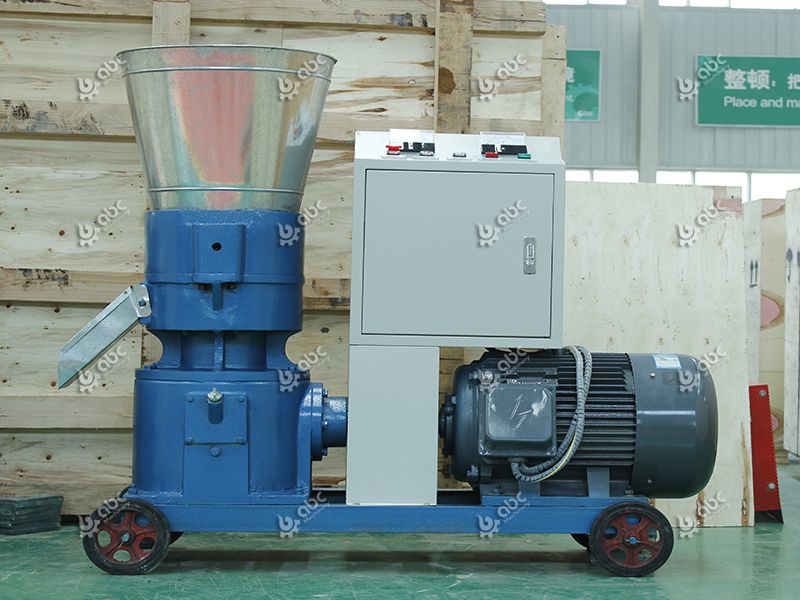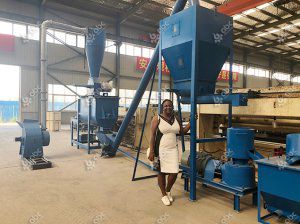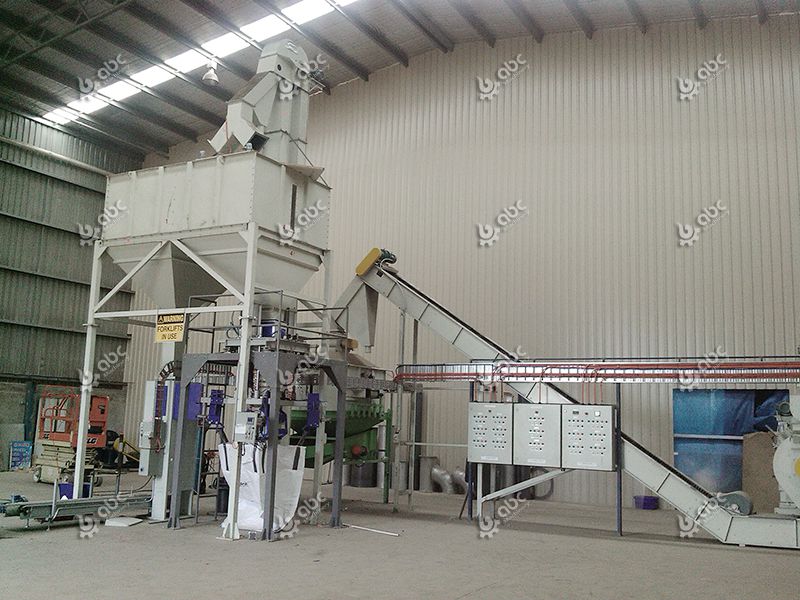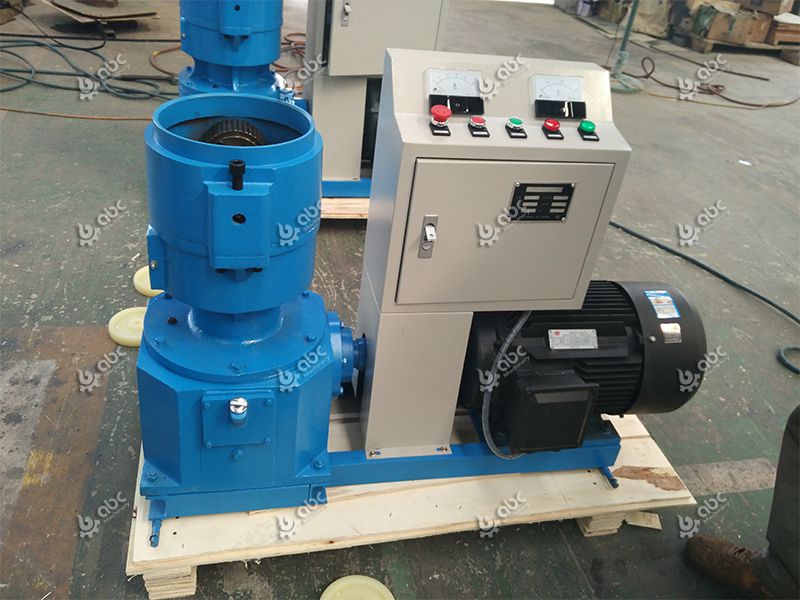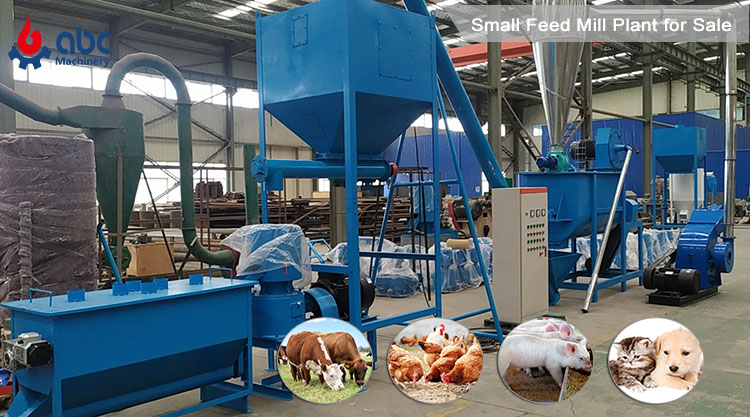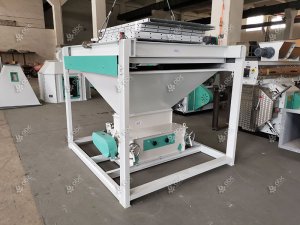Making Cattle Feed Pellets from Corn Stalk / Straw
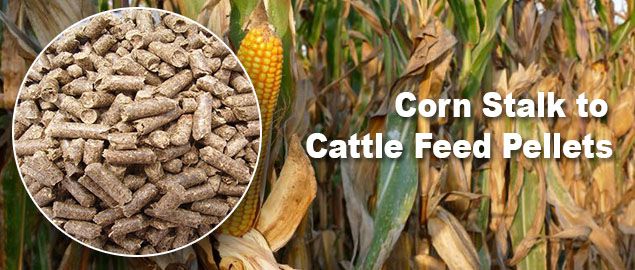
Feeding feed pellets made from crop straws such as corn stalk can save feeding cost, improve and yield and the quality of livestock products. How to choose cattle feed pellet machine? How much dose it cost to buy cattle feed pellet making machine to make your own feed? How to setup a cattle feed plant step by step? Let's talk about all these in this article!
Corn Stalk Cattle Feed Pellet Machine for Sale
The following picture shows the two best-selling equipment for making cattle feed pellets, supplied by reliable feed pellet mill manufacturer. The left one is a single feed pellet making machine for farmers to make their own animal feed, and the right one is a popular small cattle feed plant for farmers or self-employees who want to run a small scale cattle feed manufacturing business locally. You are welcome to send us an inquiry for detailed equipment information and FREE Quotation!
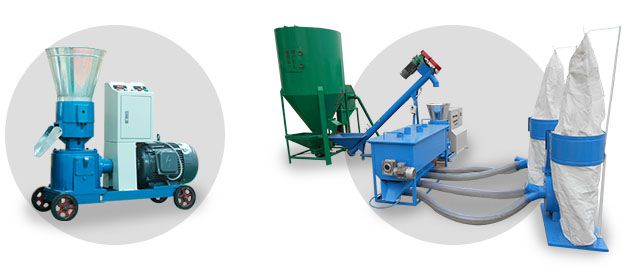
Cattle Feed Pellet Machine for Sale
Application: Our cattle feed pellet making machine is suitable for processing corn stalk, rice straw, wheat straw, peanut shell, rice bran, wheat bran, etc. Due to the low nutritional value, crop straws are generally used as coarse fodder to feed ruminant animals such as cattle, dairy cow, sheep, goat… (Read more about making alfalfa pellets >>)
If you are planning to start your own feed manufacturing business, you can talke our 1 ton/h animal feed pellet production line in Uganda for reference. Contact us now to get cost details and project report.
Complete feed pellets are made according to different livestock breeding purposes and different development stages of nutritional needs. Corn stalks are the main coarse fodder (roughage). The roughage are mixed with protein, vitamins, trace elements, minerals and other additives according to certain feed formula to produce complete feed products.
There are many advantages in the processing of crop straw into pelleted feed by use of feed pellet making machine:
- During the feed pelletizing process, the processing temperature can be 800℃~1050℃, can make the starch in the feed produce a certain degree of maturation, and produce a strong fragrance. In addition, pelleted feed is hard and convenient for cattle, cow, sheep to chew and eat, improved the palatability of feed.
- The pelletizing process can also denaturalize trypsin resistance factors in grains and beans, reducing adverse effects on digestion. It also helps kill all kinds of parasite eggs and other pathogenic microorganisms, so that to reduce all kinds of parasitic diseases and digestive tract diseases of the cattle.
- Cattle feed pellets have high utilization rate and are easy to feed. It is also easy to control feed quantity and save feed.
How To Make Corn Stalks Into High Quality Cattle Feed?

Crop Straw (rice straw, wheat straw, corn stalk)
To make nutritionally complete cattle feed, let’s check the characteristics of crop straw first: corn stalk and other kinds of crop straw generally have high content of cellulose and low content of crude protein:
| Cellulose Content of Crop Straw | ||
|---|---|---|
| Crop Straw Type | Neutral Detergent Fiber (NDF) | Acid Detergent Fiber (ADF) |
| Rice Straw | 61.9% ~ 74.4% | 40.2% ~ 53.0% |
| Wheat Straw | 67.1% ~ 73.0% | 53.0% ~ 56.2% |
| Corn Straw | 60.4% ~ 71.9% | 37.4% ~ 51.5% |
| Crop Straw Type | Neutral Detergent Fiber (NDF) |
|---|---|
| Rice Straw | 3.8% ~ 5.9% |
| Wheat Straw | 4.0% ~ 5.1% |
| Corn Straw | 8.8% ~ 9.6% |
The limited nutrition factor will affect the intake of straw forage and digestibility of nutrients by cattle and other livestock, which restricts the performance of animal production. Therefore, when using corn stalk to make cattle feed, it is necessary to make a good feed formula to improve the nutritional ingredient. Read more about straw pellet making machine >>
Setup a Complete Cattle Feed Pellet Plant
According to the United Nations food and agriculture organization statistics, about 66% of the world crop straw is returned to the field or burned directly, about 19% is used as building materials or vegetable covering materials, and only 12% is used for cattle feed processing. Another 3% or so as raw materials for the handicraft industry. (Related Project: 5 ton/h Cattle Feed Production Plant)
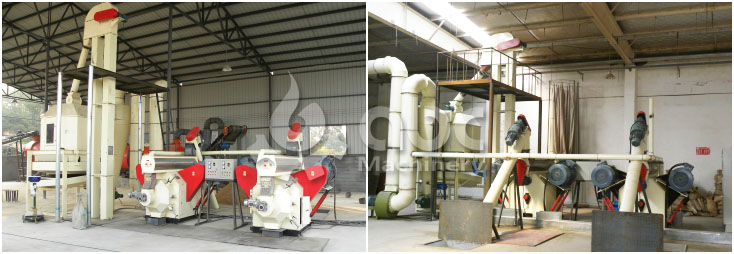
Complete Cattle Feed Pellet Plant Cost
Utilization of Cron Stalk / Straw – Cattle Feed Production
Crop straw such as corn stalk can be used in a variety of ways, but basically can be divided into feed production and non-feed production. The utilization of feed production can be divided into direct feed production and indirect feed production, while non-feed utilization can be diversified according to its production purpose. For example, the feed utilization of straw is directly used for feeding cattle or making mixed feed (compound feed). The second is indirect feed utilization, that is, straw is used as the substrate for growing single cell protein (NCP) before it is used as the feed for cattle or other livestock animals. The non-feed utilization of straw include substrate materials for mushroom production, biogas materials, covering materials for vegetable production, livestock and poultry barns, living energy fuels, papermaking materials, building materials, raw materials for weaving, etc.
Benefits of Invest in Corn Stalk Feed Production Plant
In fact, invest in corn stalk feed production plant is really a beneficial and “green” project:
- Corn stalk feed pellets also help improve the livestock performance and increase the yield and quality of livestock products.
- Invest in corn stalk feed production business helps increase the economic income of farmers (herdsmen).
- Feeding cattle and sheep with corn stalk or straw is the best way to solve “competition between human and livestock for grain” and "competition between pigs and cattle for feed".
- Feeding cattle and sheep with corn stalk feed pellets, the animal dungs are also good resource of organic fertilizer, which is conducive to improving the soil and protecting the agricultural ecological environment.



